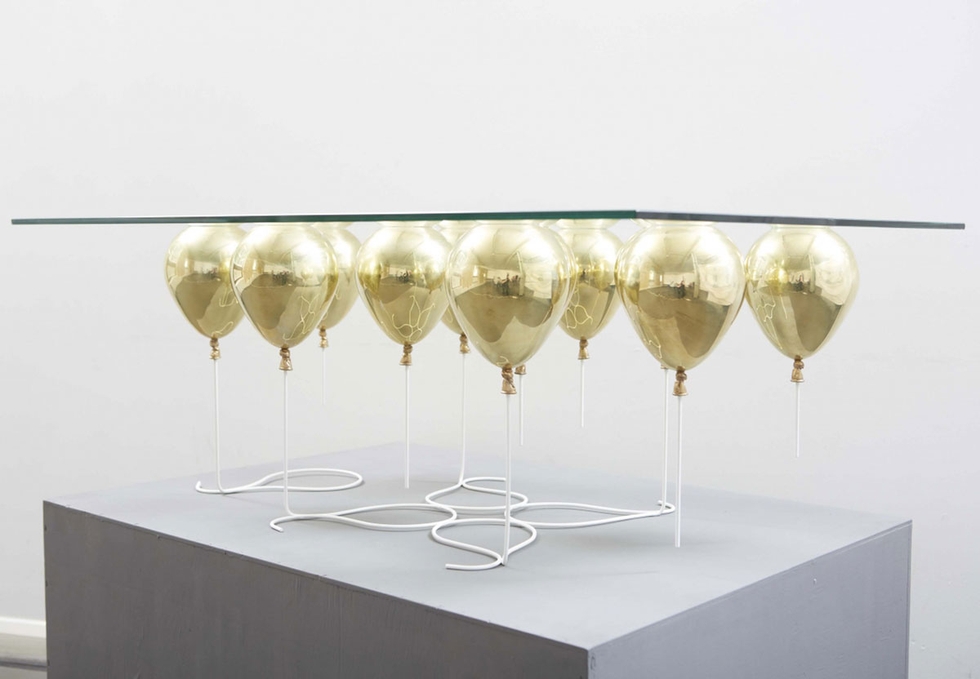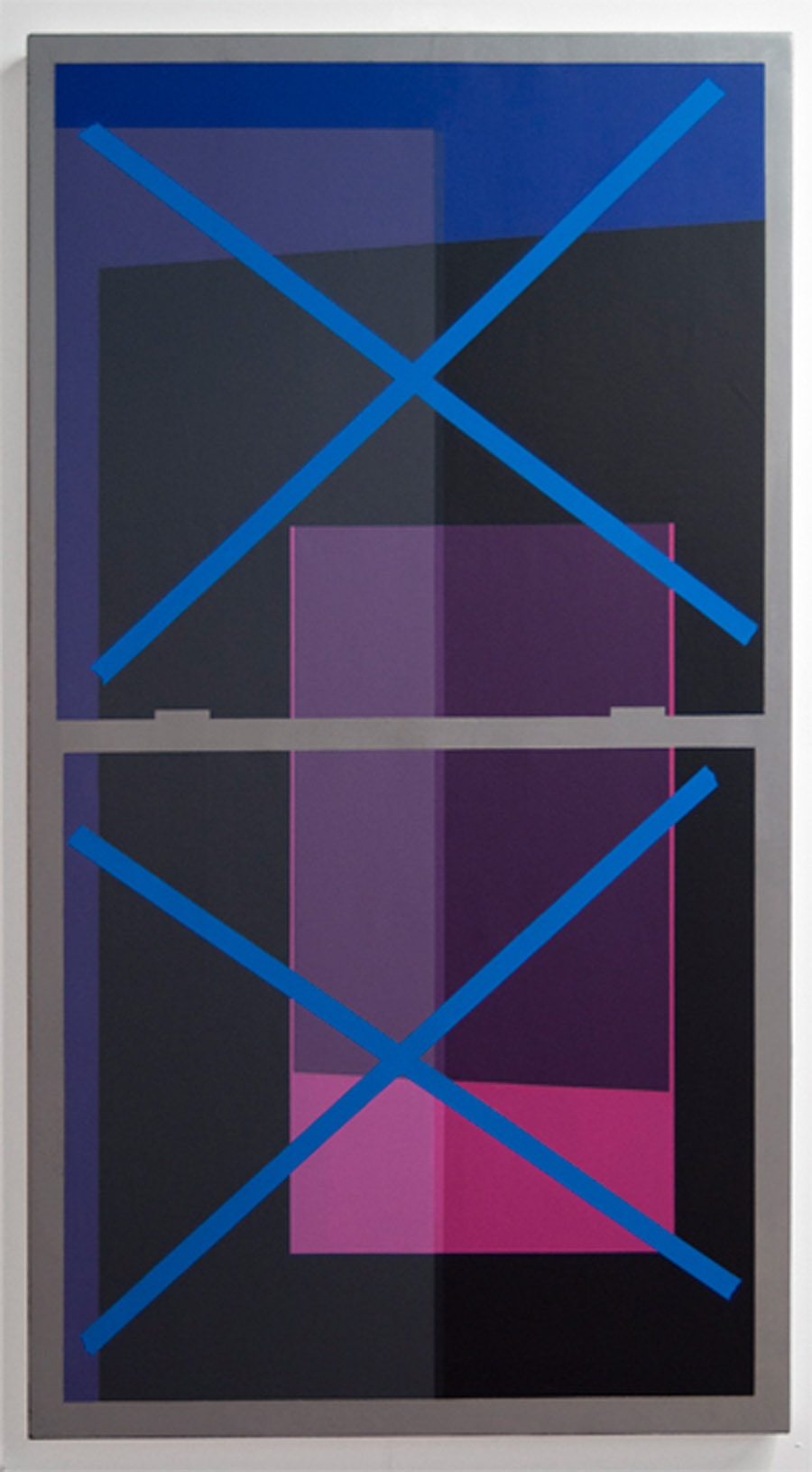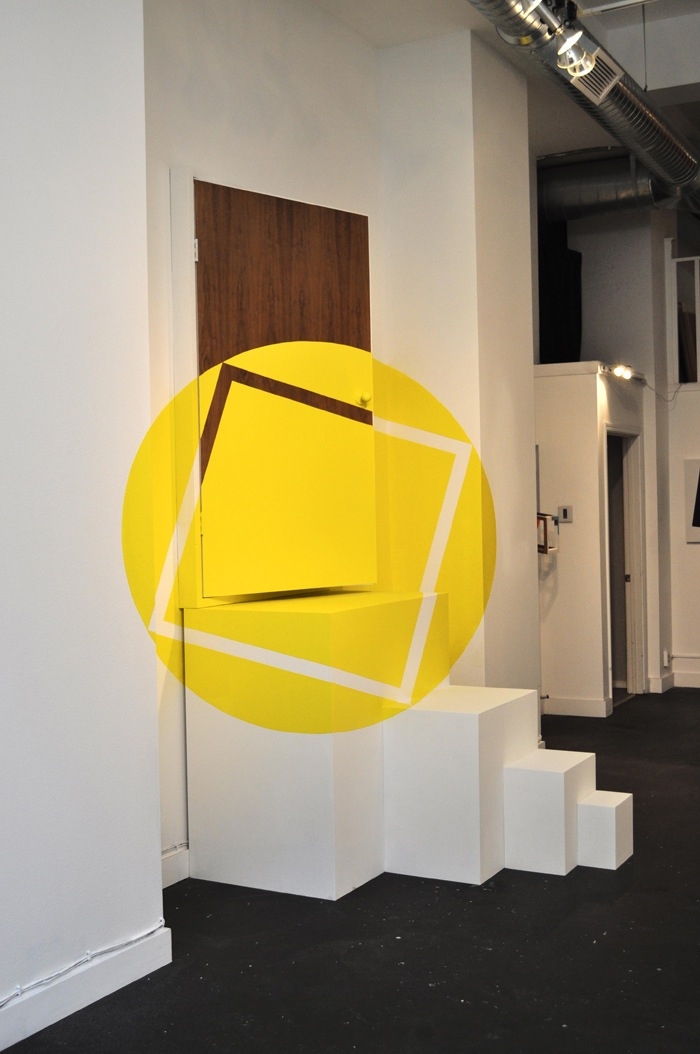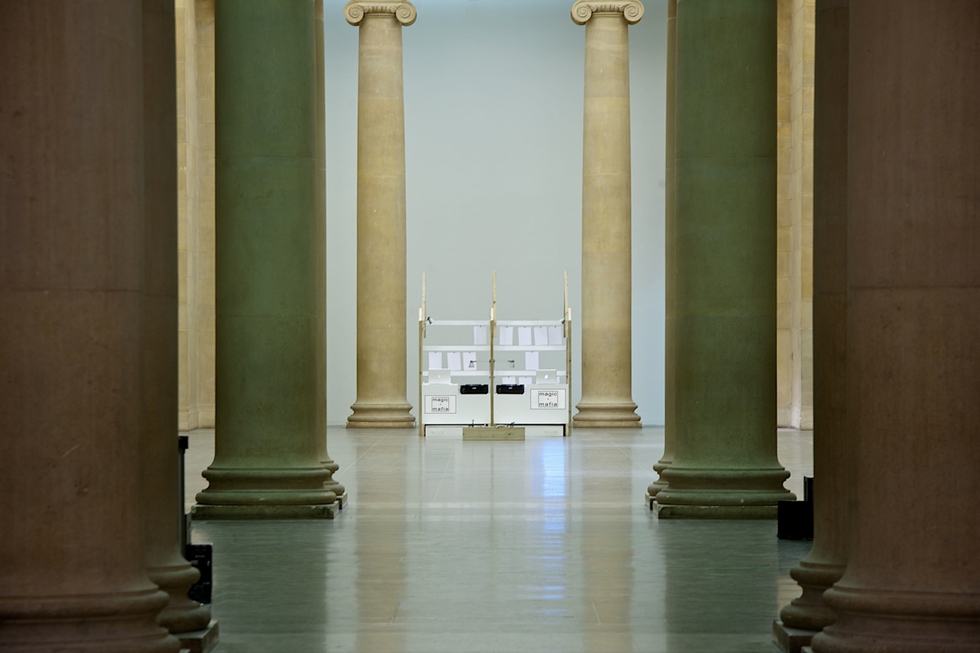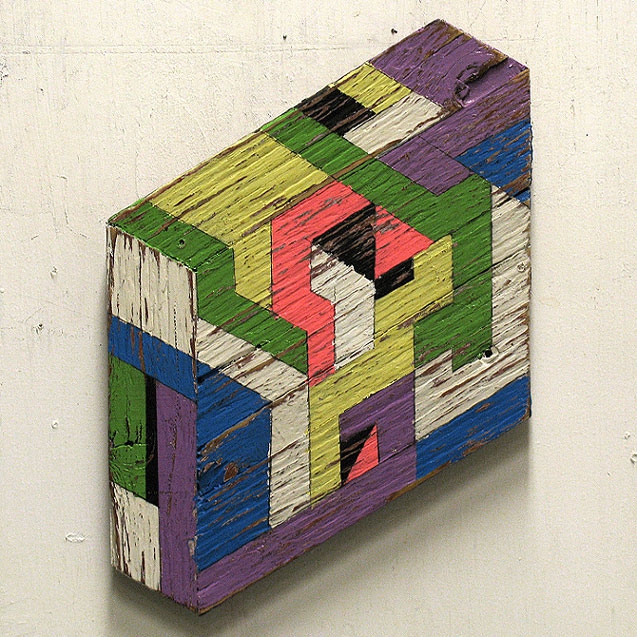The decadent UP coffee table, recently released by design studio Duffy London, is a glass panel supported by a group of small metal balloons. If you can get past that there's something slightly Entertainment 720 about it, the goofy elegance and implied weightlessness would make any living room a little more buoyant. Christopher Duffy (who also designed the swing chair) is limiting this run to twenty. Details on how many he has left are up in the air.
The Smoking Gun reports that a hacker going by the alias of "Guccifer" has gotten into a few e-mail accounts associated with the Bush family. He uncovered a trove of personal information including cell phone numbers, family pictures, and what appear to be self-portraits of George W. Bush in the shower and tub, which were sent by the former President to his sister. Are they any good? Doesn't really matter. These two weapons of mass introspection remind us of Al Gore's post-election weird beard and the Romney gas-pumping media frenzy. We didn't think it was possible to have much empathy for the man, and yet, here we are. It's strangely comforting to think of the little guy just looking at his wet, shriveled body in the mirror wondering, "Who am I?"
Venice, California-bsed artist (and co-founder of Okla Press) Becca Mann returns to her former homebase of Chicago for "Wane's World: A History of 'Things'"—a gallery show featuring her painting and drawing. There's an opening tonight featuring a live set from the band Running.

Mann's work might make you uneasy at first. She makes drawings and paintings from photographs. Her subtly edited final images are analogues of the original photo. Most interestingly, Mann uses a color layering process in creating her images that she likens to the mechanics of CMYK printing. The results are images that are quite realistic on one level, but not obviously hand-made. That might be part of the point. Mann plays with the relationship between objects and their context within the photographic or painter's frame.
"Becca Mann: Wane's World: A History of 'Things'"
Feb 8–Feb 28, 2013
The Soccer Club Club
2923 N Cicero Ave, Chicago, IL 60641
Opening Reception: Friday, February 8, 8-11pm with a special live performance by Running
There's a lot of chaos in Laurent Impeduglia's paintings. Each canvas is charmingly covered corner to corner with compacted images: houses on pillars, messiahs on mountains, and evil-looking castles all standing shoulder to shoulder. And that's just from "What Did God Do For You Today." In his work, the weather isn't just bad, it's terrible. If it's not a lighting storm, it's a biblical intervention.
Impeduglia seems to mock the idea of idolatry. He has a series of paintings of huge memorial statues built on isolated mountains that bear the artist's own name, and another in which he illustrates numbered black tables covered with various idols.
Impeduglia's images depict moments of action in post-apocalyptic (or at least post-logic) cities. Sometimes he scrawls cryptic messages as titles like "Master of the Dunjeon" or "This Is Pop Shit" at the top or directly in the center of his paintings. The titles read like another element of the spontaneity in his style. We get the feeling his process includes an improvised composition, taking cues from one form to the next, rather than executing a detailed plan.
Christian Flynn paints mostly empty spaces. But his empty spaces are only temporarily uninhabited. Whether it’s a fan in a window, a store locked from the inside, or windows taped for a hurricane, we never see Flynn’s characters, but we get a sense that their actions have just occurred.
Flynn’s paintings present potentially banal subjects in a warm and compelling way. He incorporates contemporary imagery, as in a projector left running in an empty classroom, and rich evocative color palettes to give his paintings a surprising amount of emotional weight. We see these works as the equivalent of a poem about using an iPhone or an interesting film that manages to use Twitter to advance its plot. [via booooooom]
christianflynn.com
Christopher Derek Bruno wants you to think about relationships. His paintings force you to consider at least two. The first is a physical one, and it’s between the viewer and the painting. He builds three-dimensional shapes to manipulate the image the viewer sees depending on where they are standing in relation to the painting in a gallery. He considers the slow walk we all do at shows, and allows the three-dimensional structures to manipulate his painted forms as we leave a work.
The second relationship is between the enamel colors he paints onto those three-dimensional forms. He uses very transparent colors, and layers geometric shapes to achieve a similar effect to overprinting, most commonly seen in silkscreen printed work. We think his work is meant to be seen in motion [via booooom].
Three designers in NYU's ITP program, Adrià Navarro and DI Shin, along with Ananya Mukherjee, have designed a desktop printer and browser extension that allows one to print the best moments of our online lives in the style of a Polaroid instant photo. The project is called the "Polaroid Cacher." After framing and "shooting" your screen with the Chrome browser extension, you can print the image to a Polaroid camera, actually the wireless printer built into the shell of an iconic Land Camera. By the way, even the printer pays homage to Polaroid. It uses the Polaroid-developed ZINK printing system.
What's significant about the project is that the designers aren't just using the Polaroid camera's form simply to add a level of kitsch or nostalgia to the modern habit of posting social media updates. Instead the Polaroid Cacher is designed to function in the same way as the original Polaroid instant camera: to make a physical, visual artifact from a fleeting moment or interaction. The designers aren't passing any judgments about the role of status updates or Tweets in our daily lives. The students believe digital updates are just as significant as instant photos were decades ago, but because they don't have a physical form, they can be easier to forget.
Three designers in NYU's ITP program, Adrià Navarro and DI Shin, along with Ananya Mukherjee, have designed a desktop printer and browser extension that allows one to print the best moments of our online lives in the style of a Polaroid instant photo. The project is called the "Polaroid Cacher." After framing and "shooting" your screen with the Chrome browser extension, you can print the image to a Polaroid camera, actually the wireless printer built into the shell of an iconic Land Camera. By the way, even the printer pays homage to Polaroid. It uses the Polaroid-developed ZINK printing system.
What's significant about the project is that the designers aren't just using the Polaroid camera's form simply to add a level of kitsch or nostalgia to the modern habit of posting social media updates. Instead the Polaroid Cacher is designed to function in the same way as the original Polaroid instant camera: to make a physical, visual artifact from a fleeting moment or interaction. The designers aren't passing any judgments about the role of status updates or Tweets in our daily lives. The students believe digital updates are just as significant as instant photos were decades ago, but because they don't have a physical form, they can be easier to forget.
With so much attention focused on the mini, the mobile, and the uploaded, that workhouse piece of hardware in the corner of your studio, the scanner, might be feeling neglected. Maybe the next generation will give it more attention? At the recent Tate Britain SCAN.IT exhibit for the Tiny Tate event on November 3, Brighton-based design+production duo Magic+Mafia put a pair of scanners in the hands of tots and their families. In the SCAN.IT "shed" (based on a beach hut design), youngsters were invited to create their own artwork via a household scanner. Kids could scan a range of provided objects and make abstract images, or take impromptu scanner "portraits." The artists took home high quality prints of their creations—and some pieces were selected for a mini exhibit within the shed itself.
Photos by lucid-photography.co.uk
The past and future collide in the geometric sculptures of Aaron Moran. The young Canadian artist grew up east of Vancouver, BC, studied at Emily Carr University of Art + Design and Film & Video at Simon Fraser University—recently serving as artist in residence at the Ranger Station Art Gallery in Harrison Hot Springs, BC. His work balances an interest in the fine line between the natural and man-made. He works mainly with reclaimed materials—often found wood from demolition sites—in two- and three-dimensional pieces that look like some kind of future primitive pyramids. Needless to say, we're big fans so we caught up with the artist by email to find out more.
Where do you usually find the wood you work with?
It is almost entirely found from demolished houses. I scour the lots that are being demolished to make way for condos/strip malls before they take it all off to the dump. Aside from that, I just keep my eyes peeled while I'm walking or driving around - I will gladly pick stuff up and carry it back to the studio if I'm out and about.
Do you paint the pieces or are all the colors from the salvaged wood?
It's probably 50/50 - when I do paint the pieces, it is usually to contrast fragments that were found already painted.
The shapes and geometric forms you create are very modern—which artists and influences led you to work with those kinds of shapes?
Kurt Schwitters, Michael Johansen, Juan Gris, Anish Kapoor, Boris Tellegen
What are you working on now?
I *just* finished a collection of pieces for a project with Sperry Topsider that was exhibited in Boston called "The Sea Project." This aside, I am working on a new group of what I would call 'two and a half dimensional' works that will be exhibited in February here in the Fraser Valley.
